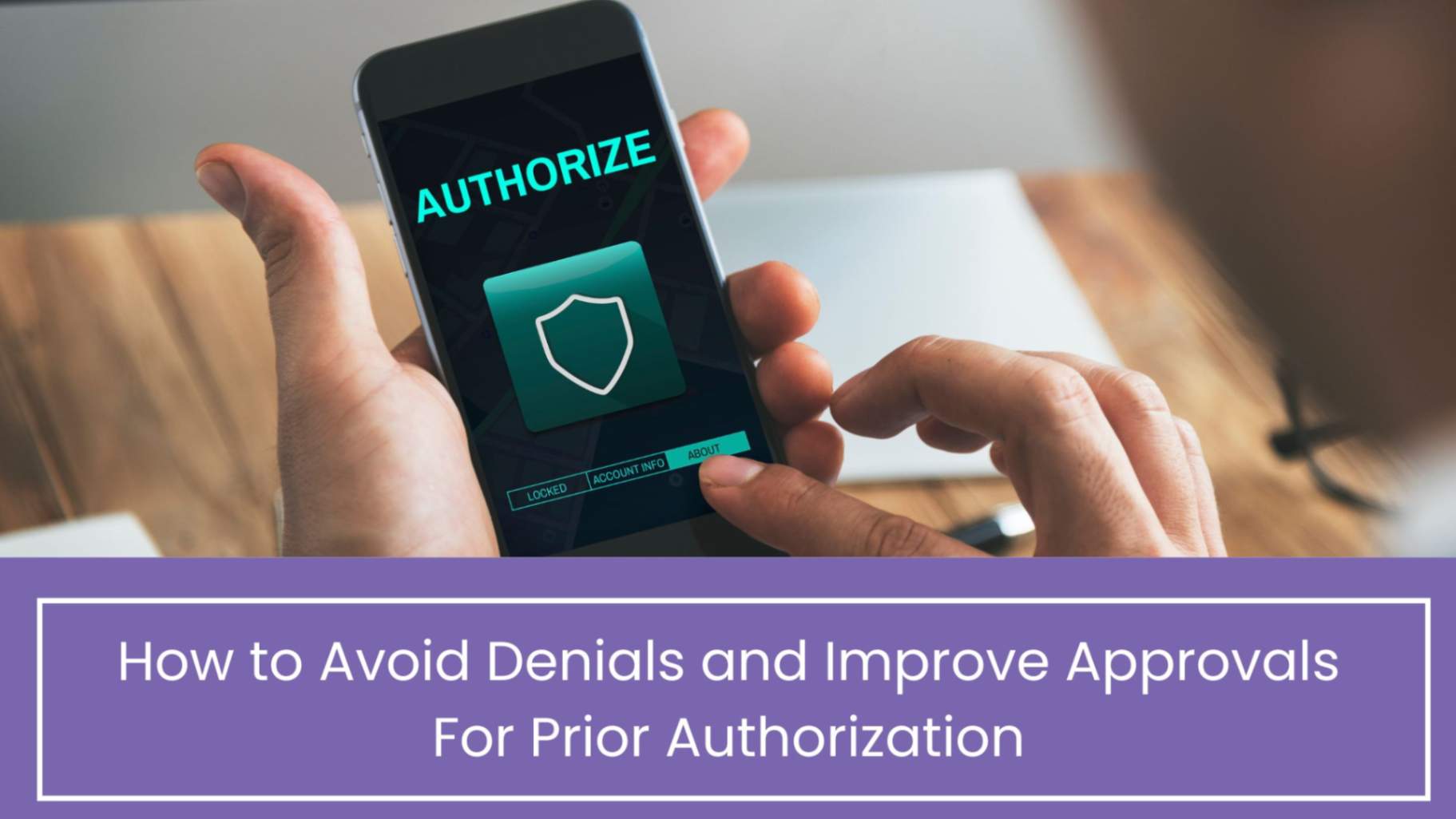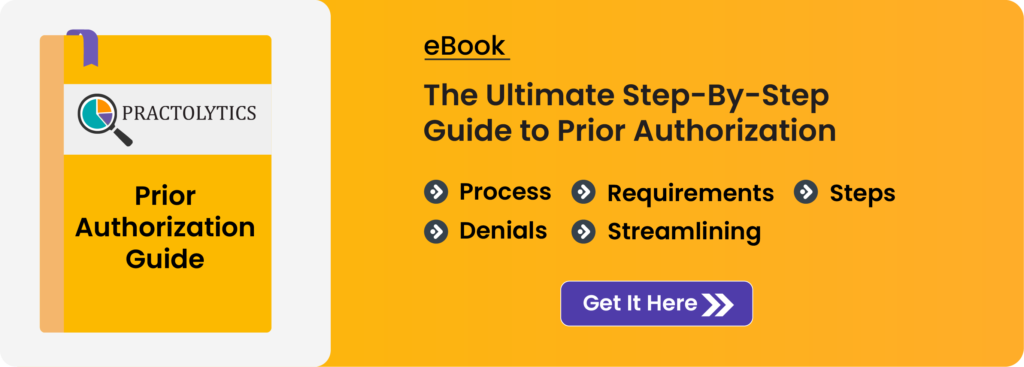How to Avoid Denials and Improve Approvals For Prior Authorization
The prior authorization process is a crucial gatekeeper in the modern healthcare ecosystem of NUM. It is frequently annoying, as it can hinder patient treatment. The PA landscape aims to ensure medical necessity and cost-effectiveness. However, the possibility of denials, administrative difficulties, and complicated payer laws frequently impede it. Healthcare workers now need to be adept at navigating mazes. This ability directly impacts patient access, practice productivity, and financial stability.
The sting of a PA denial resonates deeply. It translates to delayed or denied care for patients, wasted administrative resources for practices, and potential revenue loss. But the PA process need not be an ongoing struggle. Healthcare providers can drastically cut denial rates and boost approval possibilities by implementing preemptive measures, leveraging technology, and nurturing a careful attitude. This, in turn, assures better patient journeys and a healthier practice bottom line.
Table of Contents
Understanding the Anatomy of a Prior Authorization Denial
Understanding the typical offenders behind Pre Authorization denials is essential before moving on to improvement tactics. Finding these trends in your work can yield insightful information for focused interventions:
- One of the most common offenses is the absence of medical necessity documentation. Payers need convincing and unambiguous proof that, in light of the patient’s particular condition, symptoms, and pertinent medical history, clearly shows the medical necessity of the requested service, drug, or procedure.
- Insufficient Data: Full PA petitions that lack essential data, such as exact CPT codes, ICD-10 codes, dosage information, frequency, duration, or clinical remarks, are likely to be denied.
- Coding errors: If the service is not recognized by the payer or is not deemed acceptable for the given diagnosis, incorrect or non-specific coding may result in denials.
- Non-Covered Services: The patient’s particular insurance plan might not cover the desired service or medicine. It is essential to comprehend coverage constraints and formulary restrictions.
- Inability to Meet Payer-Specific Requirements: Every payer frequently has a different set of requirements and specifications for particular services. These criteria must be met for approvals to be granted. Denials take place when certain requirements are not fulfilled.
- Denials may result from administrative mistakes. These mistakes include missing provider information, erroneous patient data, and wrong insurance information.
- After the deadline, PA requests might not be approved. These requests may be denied due to payer processing schedules, especially for urgent or time-sensitive operations.
Proactive Strategies for Prior Authorization Success
At each step of the PA process, taking a proactive and careful approach is essential to reducing denials and increasing approvals:
- Master the Art of Thorough Documentation:
- Paint a Clinical Picture: The patient’s condition and the reasons for the requested service must be clearly explained in the record. The record should also clearly state the medical necessity of the service. Provide medical history. Provide physical examination findings, test results, and past treatment setbacks.
- Be specific and precise in your language. Avoid vague or unclear wording. Give a detailed explanation of the process, the medication’s name and dosage, the relevant CPT and ICD-10 codes, and the expected length of treatment.
- Describe clearly the urgency of the service that is required. Stress that postponing the service could have a detrimental effect on the patient’s health.
- Using recommendations based on evidence, support your request. To support your argument, include pertinent studies or clinical recommendations.
- Embrace Technology and Automation:
- Make use of systems for electronic prior authorization (ePA): Include ePA systems in the workflow of your EHR. These tools can greatly expedite the submission process and frequently include logic that walks you through payer-specific requirements.
- Use Claim Scrubbing Software: Before the PA request is ever submitted, use claim scrubbing tools to find any possible coding errors or missing information.
- Integrate Formulary Checks: Make use of resources that let you rapidly verify that a patient’s prescription drug is covered by their insurance formulary.
- Create Automated Reminders: Put in place mechanisms that notify you when a PA is about to expire or when a resubmission is required.
- Know Your Payers Inside and Out:
- Make Payer-Specific Checklists: Make and keep thorough checklists that specify the particular PA needs for every significant payer in your network. This covers the necessary paperwork, forms, and submission guidelines.
- Keep Up with Payer Policies: To stay up to date on modifications to PA policies, coverage standards, and preferred prescription lists, periodically check payer websites, newsletters, and updates.
- Create Payer Contacts: List the important people at each payer organization to contact with questions or concerns about PAs. Developing relationships can occasionally make communication and problem-solving easier.
- Implement a Robust Internal Workflow:
- Allocate Responsible Staff: Assign particular members of your practice to oversee the PA procedure, guaranteeing responsibility and proficiency.
- Establish explicit, uniform internal procedures for requesting, submitting, monitoring, and contesting PAs.
- Conduct Regular Training: Provide ongoing training to your staff on PA best practices, payer-specific requirements, and the use of relevant technology.
- Implement a Tracking System: Utilize a robust system to track the status of all PA requests, including submission dates, approval/denial status, and any required follow-up actions.
- Master the Art of Appeals:
- Recognize the Denial Reason: Examine the denial’s justification in detail. Don’t submit again without fixing the problem that was found.
- Obtain More Documentation: To support your appeal if the denial was made for lack of medical necessity, collect more clinical notes, test findings, or expert opinions.
- Follow the Payer’s Appeal Process: Adhere strictly to the payer’s specific appeal procedures and timelines.
- Be Persistent and Advocate: Don’t give up after the initial denial. Pursue all available levels of appeal if you believe the denial was unwarranted.
- Prioritize Patient Communication:
- Patients should be educated about the Prior Authorization procedure, possible deadlines, and the justifications for its necessity.
- Inform Patients: Inform patients on a frequent basis about the progress of their Pre Authorization requests.
- Address Patient Concerns: Be prepared to answer questions from patients and ease their concerns about delays or denials from PAs.
Role of Practolytics in Streamlining Prior Authorization
At Practolytics, we understand the significant burden that the prior authorization process places on healthcare practices. Our solutions are designed to alleviate these challenges by:
- Automating ePA Submissions: By connecting with leading ePA systems, our technology minimizes human data entry and expedites the submission procedure.
- Giving Payer-Specific Advice: We offer tools and information to help your staff navigate the multiple payers’ unique requirements.
- Improving Workflows for Documentation The clinical data required by PA requests can be readily obtained with the aid of our instruments.
- Enabling Monitoring and Reporting: To keep an eye on PA status and spot any bottlenecks, we offer extensive monitoring and reporting tools.
- Offering Denial Management Support: Your team may benefit from our proficiency in evaluating denials and creating successful appeal plans.
Final Thoughts
Prior authorisation can be a bit of a headache in a family doctor’s office. But it doesn’t need to hold you back. By getting help from a person who’s good at it or by teaming up with a service like Practolytics, you can get things done quicker, make your patients happier, and keep your staff from feeling overwhelmed.
Having things run smoothly isn’t just a bonus. It’s a big deal in how we do business in family medicine these days. It’s like having a well-oiled machine that lets you focus on what’s important: keeping families healthy and stress-free.
Read More – Prior Authorization for MRI
Talk to Medical Billing Expert Today — Get a Free Demo Now!






